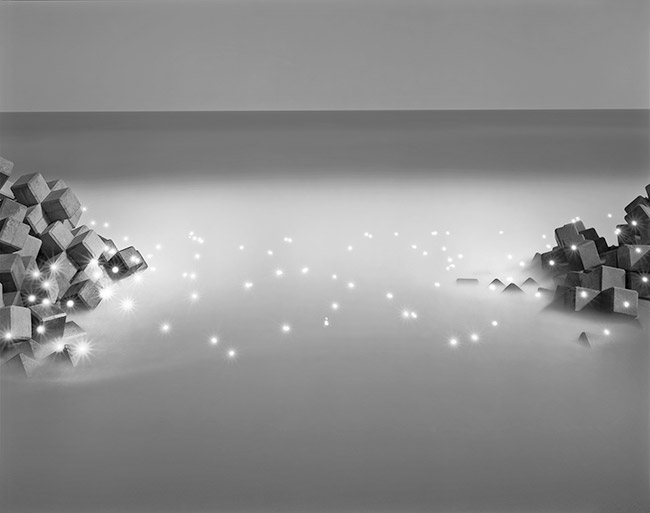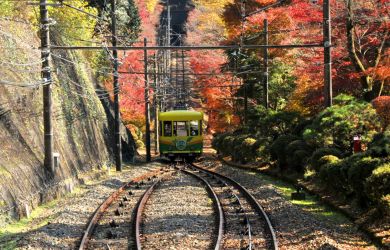
Originally published on metropolis.co.jp on June 2014

One of the first words that pops into your mind when you see the photography of Tokihiro Sato is “ethereal”—or possibly “dreamlike,” “surreal” and “atmospheric.” Note that none of these words are normally associated with photography, an art form that is better suited to documenting the gritty and mundane than evoking a magical realm slightly to the left of reality, which is exactly what Sato’s photography does.
The “Sato Tokihiro: Presence or Absence” exhibition at the Tokyo Metropolitan Museum of Photography is a major retrospective of the artist’s work, and includes several series of works photographed using different techniques. Most effective is his “Photo-Respiration” series, in which he uses long time exposures, usually at night, to create works that appear uninhabited, in which the artist himself is actually present but invisible. The only sign that he is there are dots or streaks of light that he creates using a penlight or a mirror focused on a distant source of light. In some of his works from the 1990s, taken in the deserted nightscape of Odaiba, his presence, in penlight form, manifests itself as a kind of glowing spaghetti, occupying one part of the photograph and serving as a record of his movements.
This might seem a tad pretentious—and maybe it is—but the way in which the artist visually signals his presence also gives us a sense of the way that humans are both solid and dynamic creatures, and thus also transient. We pass through the world leaving effervescent trails behind us. But the same can also be said for aspects of our environment, such as our cities. One of the reasons Sato was so attracted to Odaiba was because in the Bubble years it represented the scrap-and-build mentality that saw Tokyo forever changing.
Later works show Sato exploring more eternal themes, with seascapes where the long exposures preserve the definition of the rocks but turn the water into a kind of visual mist. Once again, Sato is present as dots of light.
Looking at works like this it’s hard not to be reminded of J.M. Barrie’s Peter Pan, and in particular the character of Tinkerbell—the glowing, firefly-like fairy. This association with the fairies is even more apparent in his forest scenes, which are truly enchanting and pagan. Not surprisingly, these also seem to evoke a Japanese sense of animism, of nature having its own sentience—although, of course, Sato is the hidden hand in this case.
Another interesting set—at least in concept if not quite in its results—is his “Wandering Camera” series. Sato was struck by the fact that the word camera comes from the Latin word for room, as in the term “camera obscura,” a darkened chamber in which people can see scenes inside projected from outside using a lens. Sato created his own portable camera obscura and travelled up and down Japan using it to both take pictures and sleep in, poetically suggesting a link between the refracted light of photography and our dreams.
Until July 13, Tokyo Metropolitan Museum of Photography.





